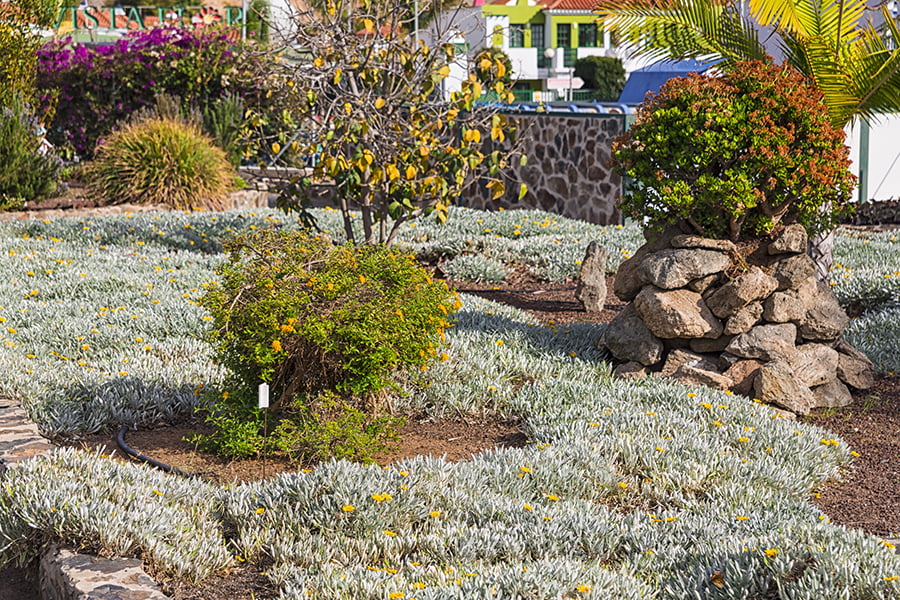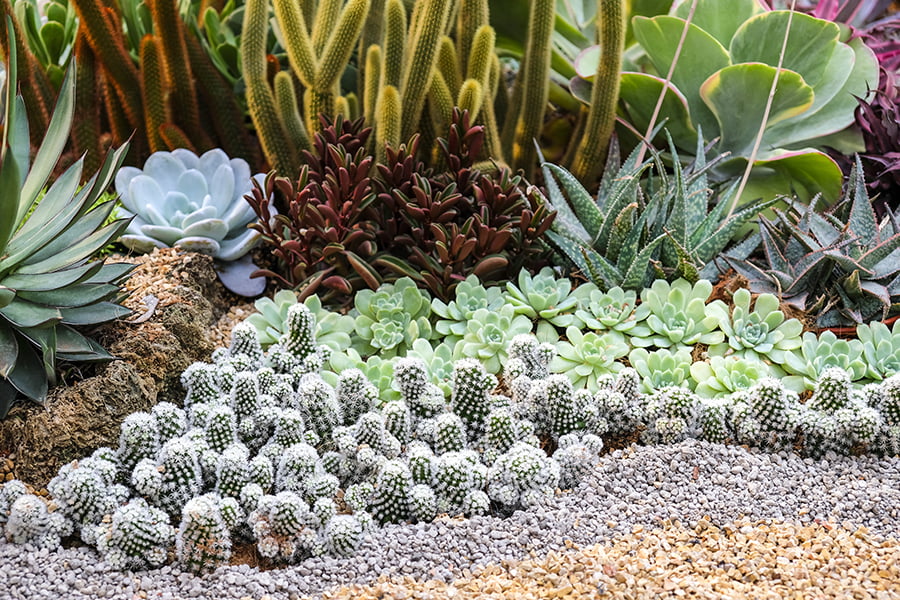Create a xeriscape that attracts wildlife by using native plants and flowers, providing water sources such as birdbaths or shallow ponds, adding rocks and logs for perching and nesting, creating a variety of levels with different heights of shrubs and trees, and providing areas of dense vegetation for shelter.
Creating a xeriscape that attracts wildlife is an excellent way to create a beautiful and sustainable outdoor space. By using native plants, creating habitats for birds and other wildlife, and incorporating water-conserving techniques, you can create an inviting environment that will bring in a variety of animals.
In this blog post, we’ll discuss how to design your xeriscape to attract wildlife, as well as the benefits of doing so. Read on to learn more!
Look Inside:
Choosing Native Plants

Native plants are best for this purpose, as they have adapted to the local climate and soil conditions over time. Native plants also provide food and shelter for native wildlife, making them an ideal choice for creating a xeriscape that will attract birds, butterflies, and other animals.
Native plants require less maintenance than non-native species since they are already adapted to their environment. When selecting native plants for your xeriscape, it is important to research which species are most suitable for your area in order to ensure success.
Providing Water Sources

This can be done in several ways, such as installing bird baths or shallow ponds, adding a drip irrigation system to existing plants, and using rain barrels to collect runoff from roofs. Bird baths should be placed in areas with plenty of sunlight and away from predators.
Shallow ponds should have sloping sides so animals can easily enter and exit the water. Drip irrigation systems are an efficient way to provide water for plants without wasting it through evaporation or runoff.
Rain barrels are an easy way to capture rainwater for use in the garden; they should be placed near downspouts on buildings or other structures where rainfall is collected. By providing these types of water sources, you can create a xeriscape that will attract wildlife while conserving precious resources at the same time.
Creating Shelter and Nesting Areas

Shelter can be provided in the form of trees, shrubs, or other plants that provide cover from predators and the elements. Nesting areas can be created by providing materials such as logs, rocks, or brush piles for animals to use as homes.
Leaving dead trees standing (known as snags) provides valuable habitat for birds and other animals. By providing these types of shelters and nesting areas in your xeriscape design you will create a more inviting environment for local wildlife species.
Selecting the Right Soil Type

Soil is an important factor in creating a successful xeriscape, as it provides essential nutrients and moisture for plants to thrive. The ideal soil type for a xeriscape should be well-draining and nutrient-rich, allowing water to penetrate quickly while providing adequate nutrition for plant growth.
The soil should have good aeration so that oxygen can reach the roots of plants and help them absorb nutrients more efficiently. When selecting a soil type, it is important to consider what types of plants will be included in your xeriscape design; different types of plants require different levels of drainage and nutrition from their soils.
Avoiding Pesticides and Fertilizers

Pesticides and fertilizers can be harmful to the environment, as well as to the animals that inhabit it. By avoiding these products, you can create a safe habitat for wildlife while still maintaining an attractive landscape.
Instead of using chemical-based products, opt for natural alternatives such as mulch or compost to provide nutrients to your plants. Choose native plants that are adapted to your local climate and soil conditions; this will help reduce the need for additional water or fertilizer inputs.
Consider adding bird feeders or other features that will attract birds and other animals into your yard. With careful planning and consideration of environmental factors, you can create a beautiful xeriscape that is both attractive to wildlife and safe for the environment.
Planting in Clusters or Groupings

This means arranging plants together in small groups, rather than spreading them out evenly across the landscape. Clustering plants provides more cover and food sources for animals, as well as creating a more aesthetically pleasing look.
Clustering plants helps to conserve water since it reduces evaporation from the soil surface and allows for better absorption of moisture into the ground. Planting in clusters also encourages biodiversity by providing different habitats for various species of wildlife to thrive in.
Grouping plants together makes it easier to maintain your xeriscape since you can easily identify any problems with individual plants or areas of your garden without having to search through an entire landscape full of scattered vegetation.
Adding Rocks and Logs for Basking Spots

Basking spots are areas where animals can rest and warm up in the sun, such as rocks or logs. Rocks should be placed in sunny areas of the landscape, preferably on a slope so that they absorb more heat from the sun.
Logs should also be placed in sunny areas and should be large enough for animals to comfortably rest on them. Logs can provide shelter for small creatures like lizards and snakes.
By adding these basking spots to your xeriscape, you will create an inviting environment for wildlife that is both aesthetically pleasing and beneficial to local species.
